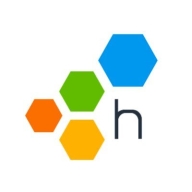

Splunk AppDynamics and Honeycomb Enterprise compete in observability and application performance monitoring. Splunk AppDynamics is noted for its superior support, while Honeycomb Enterprise is recognized for a comprehensive feature set that prioritizes innovation in data analytics, making it an appealing choice for modern environments.
Features: Splunk AppDynamics provides comprehensive application performance monitoring, seamless cross-system integration, and powerful problem diagnostics. Honeycomb Enterprise offers modern observability, advanced data analytics, and features tailored for complex data environments. The focus on flexible, innovative analytics makes Honeycomb stand out.
Ease of Deployment and Customer Service: Splunk AppDynamics offers straightforward deployment with strong post-deployment support. Honeycomb Enterprise provides a flexible deployment model ideal for cloud environments with continuous support. Honeycomb's deployment agility caters to dynamic infrastructures, whereas Splunk AppDynamics uses a more traditional model.
Pricing and ROI: Splunk AppDynamics generally incurs a higher initial setup cost, delivering solid ROI through extensive features and support. Honeycomb Enterprise is competitively priced, promising superior ROI for those utilizing its observability capabilities to the fullest. Honeycomb stands out for pricing efficiency given the depth of insights provided.
| Product | Market Share (%) |
|---|---|
| Splunk AppDynamics | 4.1% |
| Honeycomb Enterprise | 1.4% |
| Other | 94.5% |


| Company Size | Count |
|---|---|
| Small Business | 55 |
| Midsize Enterprise | 36 |
| Large Enterprise | 188 |
Honeycomb Enterprise is designed to optimize performance visibility, offering a robust platform for distributed system observability. It provides insights for complex data and aids in faster issue resolution, making it a valuable tool for IT professionals.
This tool is tailored for real-time data tracking and improving system performance efficiency. Enterprises benefit from its capacity to handle large-scale data, ensuring seamless operations and continuity. Honeycomb Enterprise helps teams to tackle data challenges head-on by delivering comprehensive analytics that enhance infrastructure reliability and performance metrics.
What Features Make Honeycomb Enterprise Stand Out?In industries like finance, e-commerce, and technology, Honeycomb Enterprise implementations demonstrate its utility in managing complex data flows and optimizing system reliability. Businesses in these sectors leverage its capabilities to maintain high service standards and operational efficiency.
Splunk AppDynamics enhances application performance monitoring with advanced diagnostics and real-time insights, offering seamless end-to-end transaction tracking and infrastructure visibility.
AppDynamics provides critical tools for businesses to analyze application behavior and performance. Through innovative features like transaction snapshot analysis and adaptable dashboards, users can quickly identify and address issues, ensuring high levels of system uptime and efficiency. It is designed to support complex environments including Kubernetes and AWS, enhancing user experience by detecting performance issues early. Despite needing improvements in network monitoring and integration, it remains a robust option for tracking application health.
What are the key features of AppDynamics?In industries like financial services and e-commerce, AppDynamics facilitates performance tracking across distributed systems, optimizing infrastructure to meet consumer demands. It excels in environments needing precise transaction monitoring and is pivotal in delivering high value and satisfaction.
We monitor all Application Performance Monitoring (APM) and Observability reviews to prevent fraudulent reviews and keep review quality high. We do not post reviews by company employees or direct competitors. We validate each review for authenticity via cross-reference with LinkedIn, and personal follow-up with the reviewer when necessary.